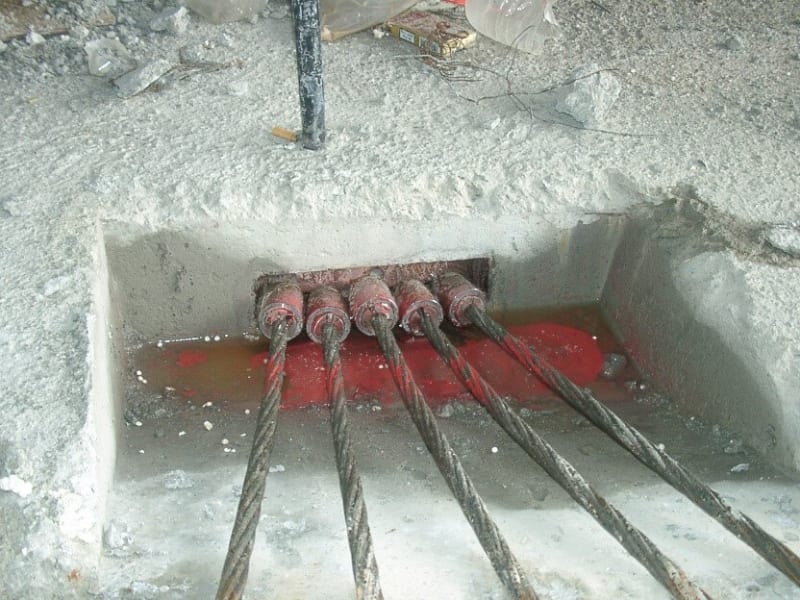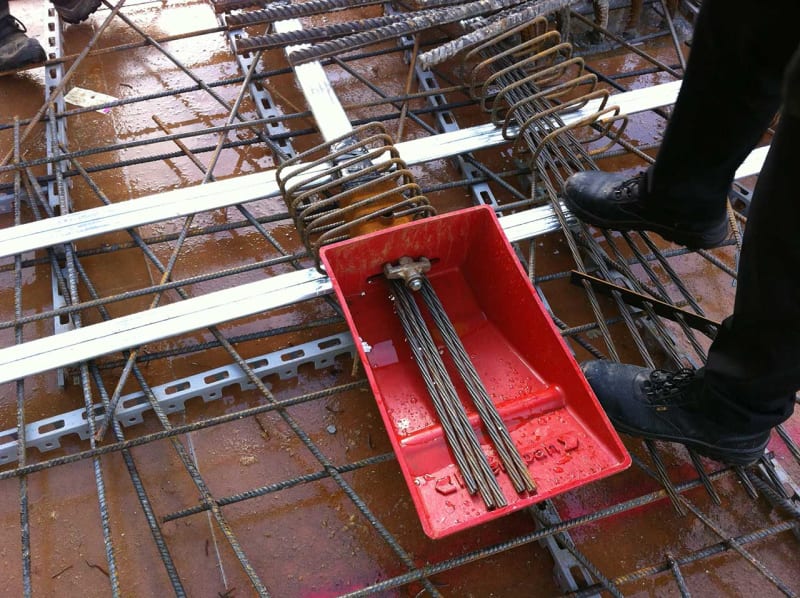CURVEB
Structural
- Jul 29, 2013
- 133
Hi all - I am looking for some guidance on the correct way to design stressing blockouts for PT slabs. We have a situation where our tendons cannot be stressed outside of the slab edge due to an adjacent structure. We have typical details showing the general reinforcement arrangement, but I need to get a better understanding of what are the typical design considerations. Because the tendon is not anchored directly over the support, I can imagine that the vertical component of the PT needs to be resolved in bending of the slab, thus an appropriate amount of mild-reinforcement should be provided.
There is also a provision in the ACI318-11 (18.13.5.5) that indicates bonded reinforcement of at least 0.35Ppu needs to be provided when the anchor is located away from the end of the member.
Any thoughts on whether it is appropriate to consider either or both of these requirements? Anything else?
See attached for a quick sketch.
There is also a provision in the ACI318-11 (18.13.5.5) that indicates bonded reinforcement of at least 0.35Ppu needs to be provided when the anchor is located away from the end of the member.
Any thoughts on whether it is appropriate to consider either or both of these requirements? Anything else?
See attached for a quick sketch.


